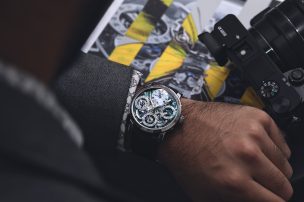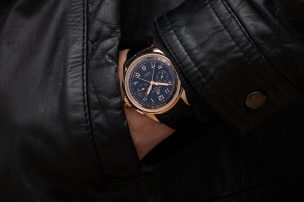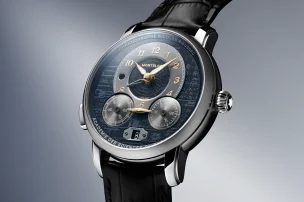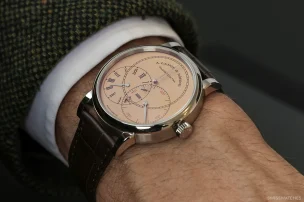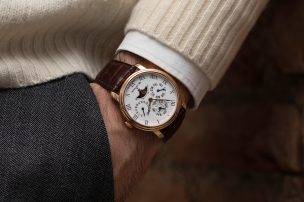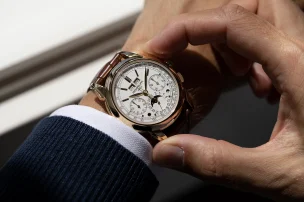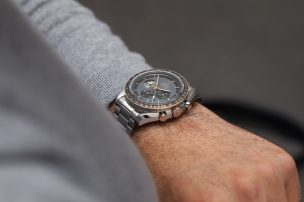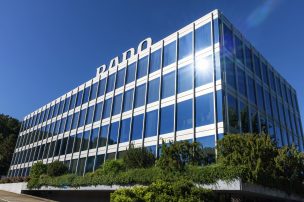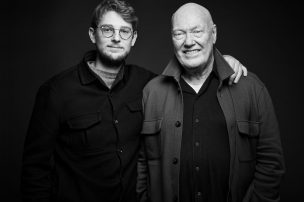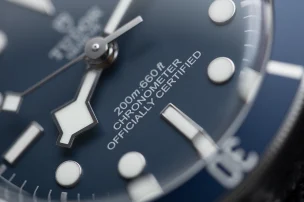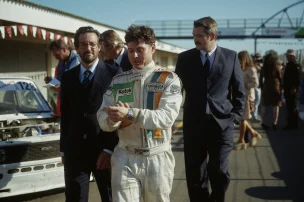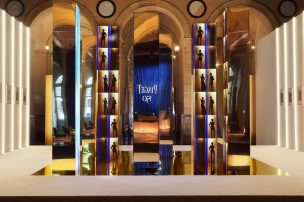

Ulysse Nardin Managing Director Matthieu Haverlan On The Collaboration With Wempe
In an interview with Swisswatches, Ulysse Nardin’s Managing Director, Matthieu Haverlan, talks about the origins of the collaboration with Wempe for the Wempe Signature x Ulysse Nardin Diver NET and the criteria he personally bases his passion for collecting mechanical watches on. It is immediately clear that Haverlan is not one of the grandiloquent characters typically found in the watch industry (unfortunately, there are too many of them, but we are in the luxury business after all). This man is a professional and a true entrepreneur. After graduating from Grenoble Business School in France, Matthieu began his career at the Swatch Group as Sales Manager for Hamilton in France. A year later, he moved to the Richemont Group in the UK, where he took on the position of National Sales Manager for Jaeger-LeCoultre. He acted as Area Manager for Asia, Russia, and North America for the manufacture. In the meantime, Matthieu also founded two start-ups in his twenties. In 2016, he was appointed Chief Commercial Officer of Ulysse Nardin, where he led the development of sales strategies, and oversaw Ulysse Nardin’s subsidiaries and global distribution channels. In 2022, he was promoted to Chief Growth Officer. Since mid-February 2024, he has been in charge of Ulysse Nardin’s entire operations.
Matthieu, as the new Managing Director, was it difficult to convince you to work with Wempe?
No, not at all. In fact, we have been working closely together since 1950. Back then, we were able to help Wempe maintain the production of marine chronometers with our spare parts. Throughout the decades, this partnership has grown. Conversely, Wempe supported us after the brand’s comeback in the 1980s and was the first German watch retailer to take on our collection at the time. So it was all quite natural and not a one-off, but rather a continuation of our 70-year collaboration.
Why is the Signature Diver Net not such a coveted double-signed watch, as Wempe has already done with Patek Philippe or A. Lange und Söhne?
As I like to collect watches privately, I’ll simply put on my collector’s hat when answering this question. For a true collector, it’s never just about the rarity of a watch. Does that really matter, apart from the fact that double-signed models are so rare? Take Patek and Tiffany: the models are of course highly coveted today, but was that a true collaboration in the modern sense? We worked closely with Wempe to create an independent watch that embodies an individual design and goes beyond the mere placement of two logos. It seemed much more subtle to me to place the logo on the ceramic element and the signature lettering on the caseback. This way, the dial remains ‘cleaner’, because there is already a lot to see there, apart from the bright colour of the strap. I generally prefer ‘cleaner’ dials – they should never be cluttered.
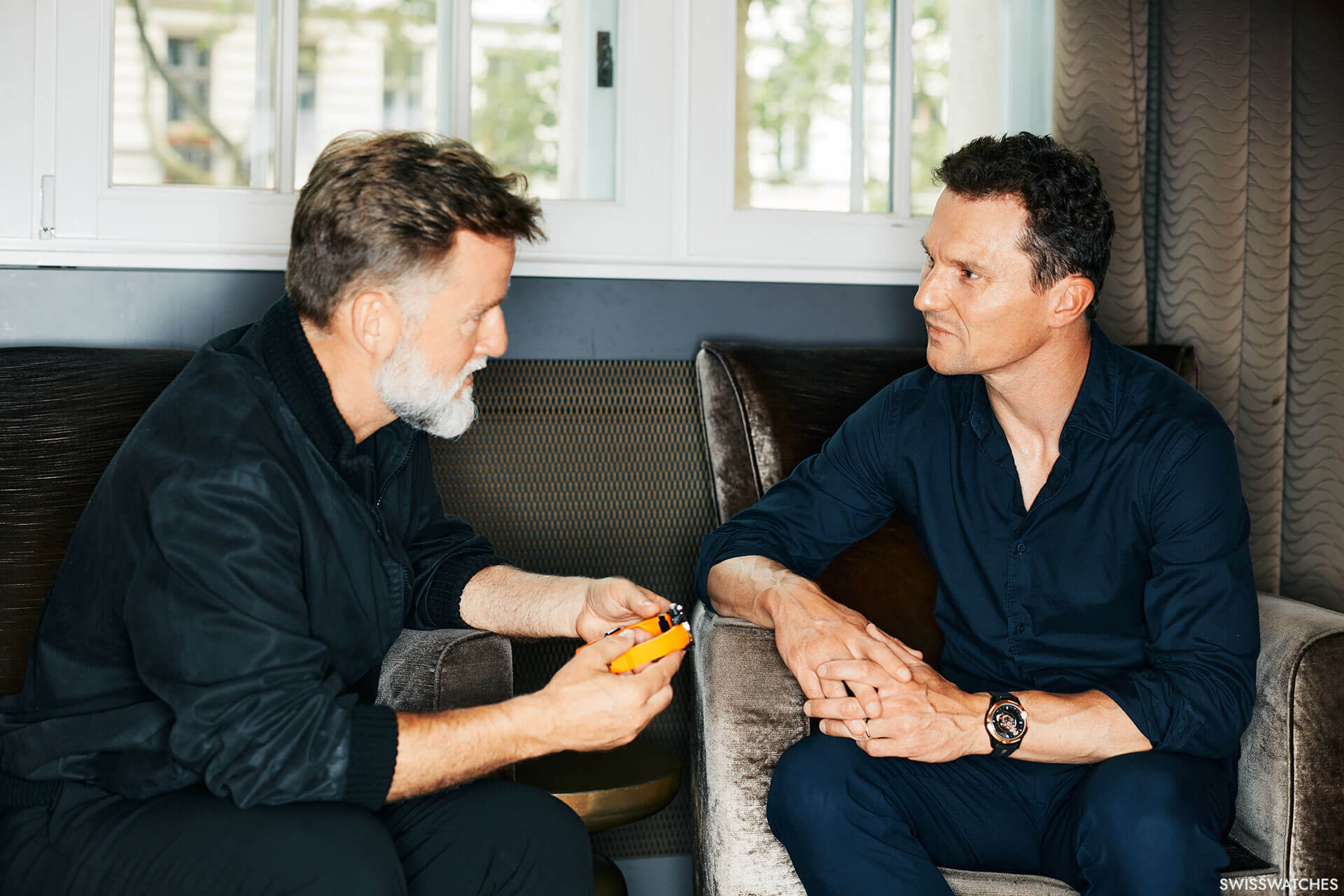
Let’s talk about the colour. How come you chose orange?
When I was in the Wempe boutique in New York three years ago, I met a salesman. He showed me around the boutique and he complained: ‘Look, just black, white, and blue. It’s all boring!’ He also mentioned in passing that newborn babies perceived the colours yellow and orange most strongly. That must have stuck with me.
How did you come up with the very limited edition of only 75 units?
That came naturally. The partnership has existed for over 70 years, and we agreed that 10 or 25 pieces were simply not enough for Wempe’s many fans.
Since when have Ulysse Nardin watches been available at Wempe?
2015; we started off again with the Wempe in Munich.
Is this the first collaboration of this kind with a retailer worldwide?
Not quite, but we rarely do something like it. Five years ago, we had a collaboration with Yoshida in Japan, where we even had a Diver Tourbillon. In any case, this is the first retail collaboration with the Diver NET, which is equipped with the most sustainable materials.
How difficult is it to find the right compromise in such a collaboration? What are Ulysse Nardin’s requirements?
As a brand, we set the framework, which was the Diver. But Wempe wanted the best technology and the innovation of the Diver NET. After that, we were very open. They liked the orange colour, the carbonium, and the way the dial appeared to be three-dimensional. All of that was very important to Wempe.
Unlike many other brands these days, Ulysse Nardin relies on retailers instead of its own boutiques. Why is that?
My personal answer is: My passion for collecting began with a multi-brand retailer. The professional answer is: local retailers cultivate long-term customer relationships, while we can create good watches. Thus, we complement each other perfectly.
Ulysse Nardin manufactures very unusual products – and not just for the typical watch consumer. At the same time, many customers don’t really know the portfolio. How do you intend to change that?
That is correct. In the future, it will be about being more focused in our message. In the past, we communicated many things at the same time, but a lot got lost in the process. That has changed since we started communicating in a very focused way via the Freak. As you know, the Freak won the Grand Prix de la Haute Horlogerie (GPHG) in the ‘Iconic Watch’ category. As a brand, this shows us that we are on the right track.
Does this also have an impact on orders?
Orders are increasing worldwide. We still have to do more for the Diver and Marine series, no doubt. We are working on transferring our brand message to all products.
What are the biggest challenges for you as a niche brand in the future?
First of all, I like the term ‘niche brand’ because it also implies exclusivity. But are we really a niche brand? We produce less than 10,000 watches a year, but I wouldn’t call it a niche brand like Urwerk or MB&F anymore. Brands that I respect, by the way.
What is decisive for you for the future, if not size?
It is important to understand that we are an independent manufacturer that is not backed by a powerful corporation. This means that we have to be very wise with our investments. As we manufacture our own movements, we spend a lot of money on research and development and invest more in development than other brands do in marketing. We want to keep this up because it creates real added value, as our investments in silicon technology, dials and case materials show.
As of 2011, Donzé Cadrans, one of the oldest manufacturers of enamel dials, belongs to Ulysse Nardin…
We produce these dials not only for ourselves, but also for some of our competitors. The production of enamel dials is one of the traditional métiers d’art of watchmaking and is at risk of becoming extinct. It is very important to us to maintain and preserve this craft.
The Freak is eye-catching, but with Wempe, you’re honouring the maritime past of both brands. Does that come up short with the ‘bold’ Freak?
For us, it was important to present a product that we both have an authentic connection to. Although the Freak is only 23 years old, more people now know about it than about our rich maritime past in the history of seafaring of over 175 years. The aim is to talk about both lines.
What makes you particularly proud to work for Ulysse Nardin?
Interesting question. The Freak plays an incredibly important role here. Not only is the Freak important for Ulysse Nardin, but for the entire watch industry, as confirmed by the GPHG’s ‘Iconic Prize’ award. This watch inspired many brands at the beginning of the millennium, as it was an example of how different mechanical watches could be: Richard Mille, Urwerk, MB&F – I would argue that they were at least partly inspired by the first Freak. For a good friend who works for a well-known brand himself, the Freak is the ‘icon of the independents’ of the early comeback years of mechanical timepieces.
For which customer is the Freak suitable, and for which not?
I think the next generation of collectors will be more enthusiastic about the Freak than many people might assume nowadays; look, I just had a meeting with collectors in Singapore. I am now 38 years old and was the oldest person at the table. The youngest was 17! And everyone present had already bought their Freak. Two thirds of them were young entrepreneurs; in any case, they were all extremely talented and gifted. One of them was not an entrepreneur, but was already a neurosurgeon at the age of 27. They all want to go their own way and not follow in the footsteps of others. This is what unites Freak customers worldwide. If you don’t want to break out of your comfort zone in life, our watches are probably not for you.
If you don’t want to break out of your comfort zone in life, our watches are probably not for you.
Matthieu Haverlan
Are the Diver and Ulysse Nardin’s marine chronometer histories really well- intertwined on a thematic level?
To put it nicely, this is a challenge that we are facing today. After all, the Diver is a sportier ‘Marine’, and if you look into our archives, you will find that we already produced the first waterproof marine deck chronometers around 1900. So this was an early ancestor of the Diver – we need to communicate this more clearly.
What is Ulysses Nardin’s unique selling point?
You know, our watches always have something unusual about them: even our classic watches have something very unconventional about them. An Ulysse Nardin simply must not look like an ordinary sports watch. With the Diver, for example, our aim is to make it the sustainable sports watch of tomorrow. We are in the process of sustainably producing all components. 90 percent of the steel is already recycled, plus recycled elements from fishing nets for the straps and high-tech recycled carbonium from aerospace engineering. We also support a number of NGOs that are committed to protecting sharks and cleaning up the seabed. We head to where the future connects with our past. This is what sets us apart: we are authentic and have a sincere awareness of the importance of the sea as well as our own maritime past.
What are the advantages of the collaboration between Girard-Perregaux and Ulysse Nardin under the same roof, the Sowind Group? What do you share and what do you not?
We are completely separate in the creative area, including communication. The only thing we share is production in La Chaux-de-Fonds; that is to say, the manufacture and assembly of the movements. But even there, production lines are different; the crucial thing is that movements from GP and UN differ significantly.
Where do you see the greatest risks for such a valuable brand as Ulysse Nardin?
I would put it like this: we must not allow the boundaries between the two subsidiaries of our parent company, GP and UN, to become blurred at some point, as it has perhaps already been the case with other groups.
In your opinion, what makes a good collector’s watch?
Every collector has their own preference. Personally, I don’t chase after the products that everyone wants. Take the most coveted brand, Patek Philippe: I don’t collect the Nautilus or the Aquanaut. The Patek watches I collect are classic models or complications. For me, the Geneva-based brand stands in particular for complicated watches. In my eyes, that is the spirit that the brand embodies. Only then do the aesthetics come into play for me.
You talk about complications, so it’s about the movement. What role does the movement’s origin play for you personally as a collector?
I may not be the typical collector, but for me it’s a bit like cars: I appreciate manufactures who not only create good designs, but also build the engine themselves, like Ferrari, for example. For me, a real collector’s brand has to make its own movement.
Which Ulysse Nardin watch do you regard as a good collector’s watch?
The same rules apply to us: the Freak is a good collector’s watch with an exceptional manufacture movement that many people are just discovering. In my opinion, as a collector, it’s about finding watches that define the essence of a brand, that tell good stories and evoke memories and associations in their wearers. And even if you don’t buy it the first time or can not afford it, you will come across a collector’s watch time and again in your life.

